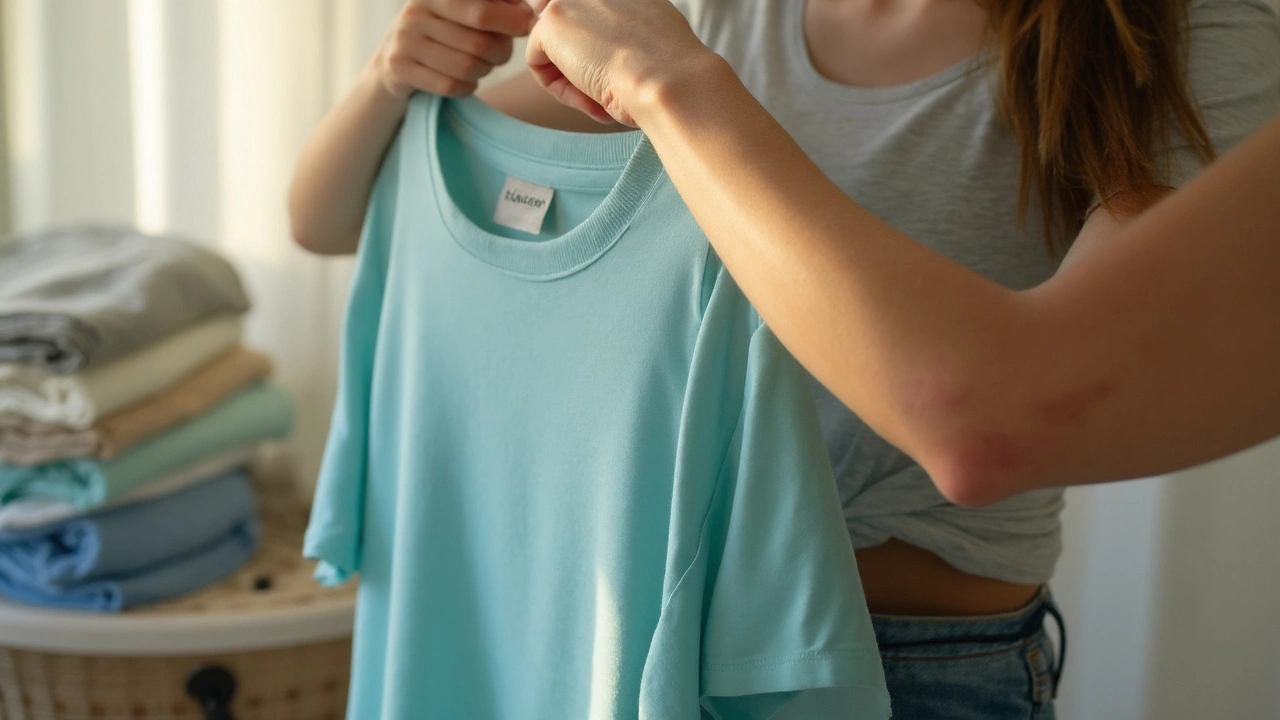Contact Dermatitis From Clothing: What Triggers It and How to Stop It
Ever notice a red, itchy patch after putting on a new shirt or socks? That’s often contact dermatitis. It’s a skin reaction that happens when something in your clothes irritates or sensitizes your skin. The good news is you can identify the culprits and take easy steps to keep your skin calm.
Common Clothing Culprits
Not all fabrics are created equal. Some of the most common offenders include:
- Nickel‑metal threads: Often used in seams or decorative stitching, nickel can cause a strong allergic response.
- Latex and rubber: Elastic waistbands and swimwear may contain latex that irritates sensitive skin.
- Synthetic dyes: Bright colors come from chemicals that can trigger a rash, especially in dark‑skinned individuals.
- Formaldehyde‑based finishes: Wrinkle‑resistant or flame‑retardant treatments leave residues that many people react to.
- Wool and acrylic: Rough fibers can physically rub the skin, leading to irritation, while some people are truly allergic to wool proteins.
If you suspect a specific garment, try a simple patch test: place a small piece of the fabric against clean skin for a few hours and watch for redness or itching.
Tips to Prevent and Soothe
Once you know what to avoid, these practical habits can keep dermatitis at bay:
- Choose gentle fabrics: Cotton, bamboo, and silk are usually skin‑friendly. Look for tags that say “hypoallergenic” or “no added dyes.”
- Wash before first wear: A single wash removes most chemicals from new clothes. Use a fragrance‑free detergent and rinse twice.
- Skip tight fits: Tight sleeves, collars, and elastic bands increase friction and trap sweat, worsening irritation.
- Use barrier creams: A thin layer of zinc oxide or petroleum jelly on vulnerable areas creates a protective shield before you dress.
- Treat flare‑ups promptly: Apply over‑the‑counter hydrocortisone cream for mild rashes, and keep the area clean with mild soap.
- Stay hydrated: Well‑moisturized skin is less likely to crack and let irritants in.
If a rash doesn’t improve after a few days of home care, see a dermatologist. They can confirm if it’s contact dermatitis and may prescribe a stronger steroid or suggest allergy testing.
Remember, the skin is your first line of defense. By picking the right clothes, washing them properly, and reacting quickly when irritation appears, you can enjoy fashion without the itch.
-
24
Learn which fabrics trigger contact dermatitis, why they irritate, and how to choose safe, breathable alternatives for healthier skin.
Categories
Tags Weight
- online pharmacy
- side effects
- dietary supplement
- dosage
- online pharmacy safety
- drug interactions
- health benefits
- allergy relief
- autoimmune disease
- antibiotic
- pharmacy reviews
- affordable antidepressant
- gut health
- safe online meds
- prevention
- patient safety
- NSAIDs
- drug interaction
- medication safety
- blood thinners

